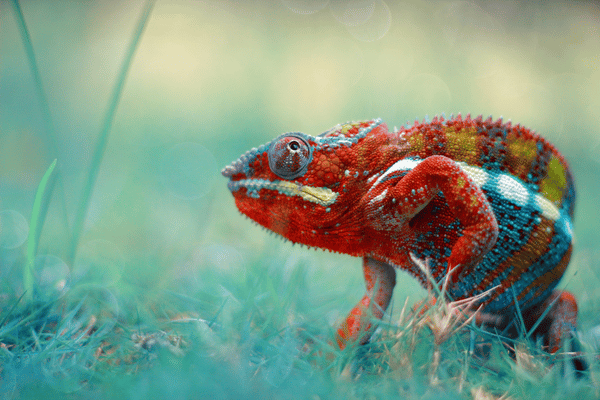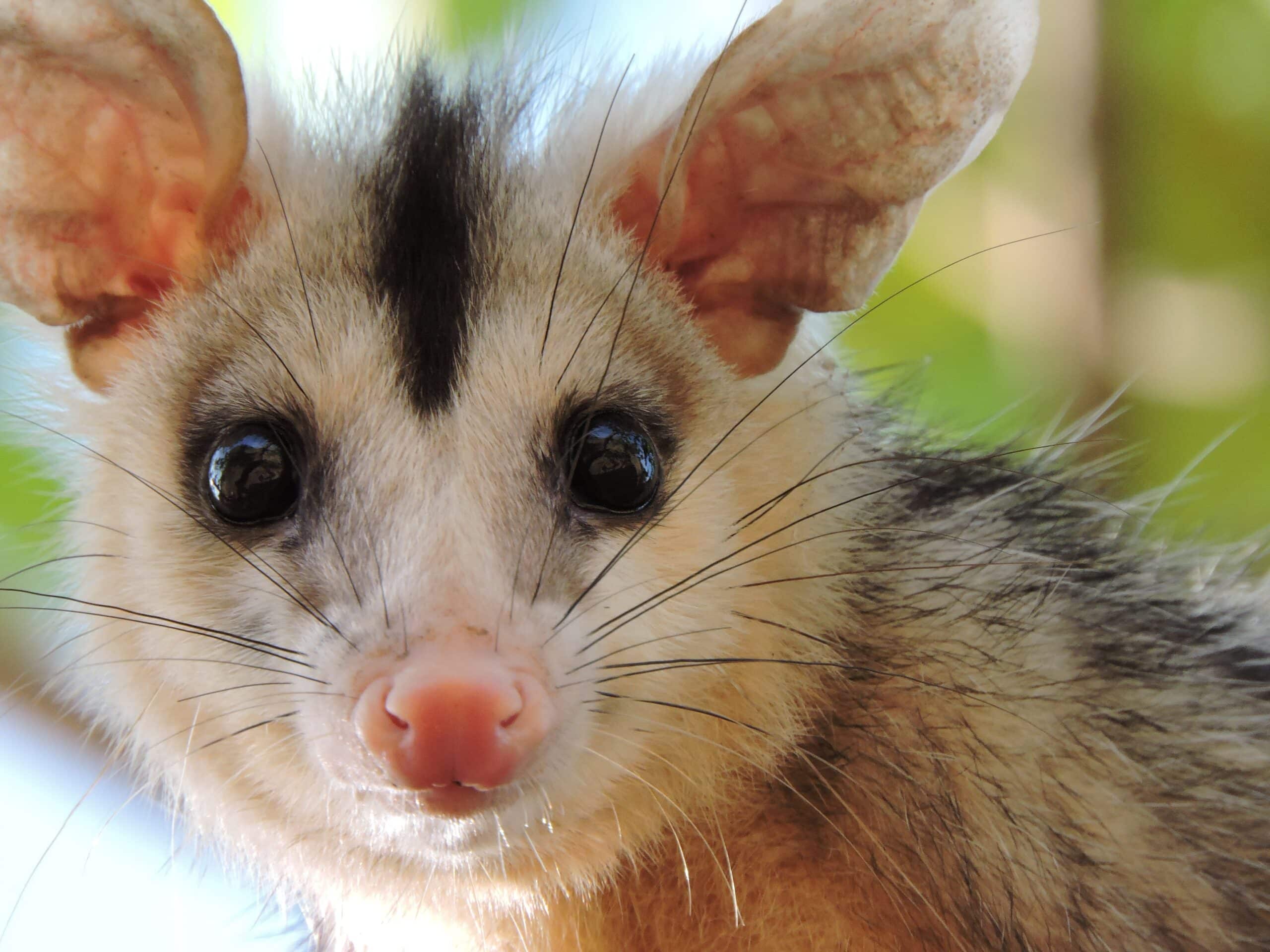
Welcome to the wild world of chameleons! Here, you’ll learn about these colorful lizards’ fascinating behavior, habitat, and conservation efforts. From their unique ability to change color to their acrobatic climbing skills, there’s a lot to learn about this unique species. So please grab a cup of coffee, and dive into the amazing world of chameleons!
Introduction to Chameleons
Chameleons are among the lizards’ most distinctive and come in many sizes. They belong to the taxonomic family Chamaeleoniforme, which includes over 160 species. These reptiles have a unique physiology that enables them to change color when threatened, although some species are more adept at this than others.
Chameleons inhabit regions around the globe, with variations in body shape and coloration depending on their region of origin – from tiny jungle-dwelling cups to large, vibrant rainforest species. All chameleons share certain traits, however; The most visible are their externally extended eyes – capable of independent movement – along with a prehensile tail and long tongue for capturing prey. Additionally, chameleons move slowly but walk upright on all four legs and have feet designed for grasping tree branches or other vegetation.
The habitat of these lizards ranges from semi-arid plains to tropical jungles and across many climatic zones, including temperate shrublands and woodlands. Whether inhabiting scrubland or living amongst tree canopies, these lizards are equally effective climbers and obtain food on land and in well-vegetated areas near bodies of water.
Chameleon behavior is complex as males defend territories while maturing females search for mates primarily through visual courtship displays involving intricate color changes throughout their bodies. This fascinating aspect of chameleon behavior offers insight into their evolutionary journey as climates shifted over millions of years and offer conservationists valuable data regarding preserving natural habitats today!
Chameleon Habitats
Due to their widespread distribution, chameleons live in various habitats, from low, dense scrub forests to mountain peaks, depending on the species. Their main requirements for habitat are protection from predators and sufficient food. Generally speaking, the larger the species, the more it needs an arid climate for thermoregulation. Most chameleons live in subtropical forests or coastal rainforests across South and East Africa and Madagascar, but some species have adapted to different climates.
The common panther chameleon (Furcifer pardalis) is found throughout east and northeast Madagascar and Mayotte Island off the coast. They live mostly in dry deciduous or spiny forests at elevations up to 4500 feet, with temperatures ranging from 55°F – 95°F throughout the year.
Veiled chameleons (Chamaeleo calyptratus), which are native to Yemen and Saudi Arabia, live higher up in the mountains surrounded by thick vegetation that can reach temperatures between 60°F – 70°F during the day, seasonally dropping into the 40s during winter nights; this extreme range affects their behavior as they normally become less active during extremely cold months.
Most Indian Ocean Island species, such as leaf chameleons (Brookesia spp.) and pink-tailed chameleons (Kinyongia tenuis), inhabit dry scrubby forest environments with sparse vegetation and high exposure to sunlight during dry seasons, making them extremely vulnerable if any change takes place in their environment due to illegal logging or agricultural practices by humans.
Chameleon Behavior
Chameleon behavior falls into two categories related to their microhabitats: tree-dwelling and ground-dwelling species.
Tree-dwellers have adapted devices for holding on to trees and keeping their bodies close to the bark, often using prehensile tails, sticky toe pads, and modified scales on their feet. Their climbing ability enables them to rapidly travel from branch to branch in pursuit of prey while maintaining a more vertical body posture when they are not actively hunting.
In opposition, ground-dwellers rest with a horizontal body posture and have briefer sprints over short distances when chasing prey insects or fleeing predators. Some species use substrate excavation – digging in the soil surface – as an adaptation for thermoregulation, obtaining refuge from predators, or during pauses in foraging activity. Many chameleons press their snouts against the substrate to control body humidity or use elevation, hoping to find other individuals in dense habitats.
Another behavior seen is a male courtship, which involves
- head nodding,
- bobbing,
- puffing up of the neck glands,
- shaking of legs
- and also head-to-head duels, which can last up to one hour!
Chameleon Reproduction
Chameleons generally reproduce sexually, although some species are capable of parthenogenesis. Males initiate the mating process through courtship rituals, typically involving color changes and presenting their best side to the female as he displays their colorful dewlaps.
After a successful mating period, fertilized eggs will be laid in clutches of up to 30 eggs, which take 6-8 weeks to hatch. The hatchlings emerge from their eggs as miniature versions of their parents but grow rapidly, with most species reaching maturity within one year. Their precise development depends on their home range’s temper, nature, humidity, and food availability.
As their reptilian archetypes suggest, chameleons have many predators, such as snakes and birds of prey, who feast on these small lizards before adulthood.
Predators of Chameleons
Chameleons are solitary creatures and can often be spotted on branches, twigs, or vines in their natural habitats. They are alert to their surroundings and have an impressive range of senses to detect predators, including keen vision and a heightened sense of smell.
Wild predators of these lizards include owls, snakes, large birds, such as eagles or hawks, small cats, such as wildcats or ocelots, and monitor lizards and monkeys. Chameleons’ camouflage helps protect them from predators when blending into the environment. Due to its ability to quickly change color to help it attract mates or fend off potential predators, the chameleon has become an iconic symbol of adaptation.
The main purpose of their incredible chameleon camouflage is for protection from predators. Chameleons can change colors to blend in with their environment or confuse predators while trying to escape unnoticed. When threatened by a predator, they will flash bright colors as a warning sign – which tells the predator that their prey may not be so easily captured. Additionally, its quick reflexes and long tongue can aid in warding off potential attackers!
Chameleon Conservation
The conservation of chameleons is becoming increasingly vital to protect these fascinating lizards and their habitats. Conservation efforts include habitat protection, legal protection, and captive breeding.
Habitat protection is the primary focus of most chameleon conservation efforts. In Kenya, for example, the Ol Njorowa Foundation has been working to conserve the remaining patches of native forests in which petricolus chameleons live. This work includes reforesting areas deforested for agricultural use and changing farming practices to reduce environmental impacts on nearby native forests.
Legally protecting chameleons can also be important in conserving them. In Uganda, a proposed National Law Protecting Endangered Species was recently adopted by members of parliament, which would provide additional legal protection for wild populations of chameleons across the country by imposing penalties on those who capture or harm these animals.
In some cases, captive breeding is being used as a means to help conserve dwindling wild populations. Captive breeding programs have successfully reintroduced large numbers of endangered or threatened species into their natural habitats. They offer an effective way to ensure that future generations are not at risk of extinction due to limited population sizes in the wild.
Threats to Chameleon Population
Chameleons face threats from numerous sources, including habitat loss, poaching for the pet trade, and in some areas, predation by cats and dogs that have been introduced to their habitats. The greatest risk is estimated to be habitat loss resulting from human impacts, including deforestation, agricultural conversion, industrial development, firewood collection, and other miscellaneous activities. As a result of these factors, many chameleon species are now facing a faster rate of extinction than other terrestrial vertebrates.
In addition to the effects of habitat damage on populations of chameleons in their native range, the illegal harvesting of chameleons for their ornamental value has also caused considerable damage. Chameleons are considered exotic pets due to their unique biology and appearance. This illegal poaching may be even more damaging to endemic species living in isolated areas since they may not have the same level of protection or awareness as those living in other parts of the world.
Furthermore, when alien predators such as cats and dogs are introduced into an environment where chameleons live, it can have dire consequences on population size as these predators can make efficient use of resources by preying on multiple species throughout their range, leading to decreased local population numbers and reduced diversity within its habitat.
Finally, the disease has become increasingly more widespread with global warming; this could lead to extinction since it can affect organisms so rapidly due to high population density but also because some diseases don’t always show up until a certain threshold for environmental conditions has been achieved.
Conclusion
The study of chameleons in the wild has vastly improved our understanding of their behavior and habitat preferences. We now know that temperature, humidity, and light play important roles in the ecology and conservation of this species. By collecting more data on factors such as environmental factors, we can continue to monitor the health of chameleon populations and work to protect them for future generations.
With an interdisciplinary approach utilizing
- ethology,
- genetics,
- ecology,
- zoology,
- conservation biology
and
- physical geography
; we can continue to develop a deeper appreciation for these fascinating lizards. The increased knowledge we gain from understanding their behavior will help us better understand how to protect them in our shared environment.





